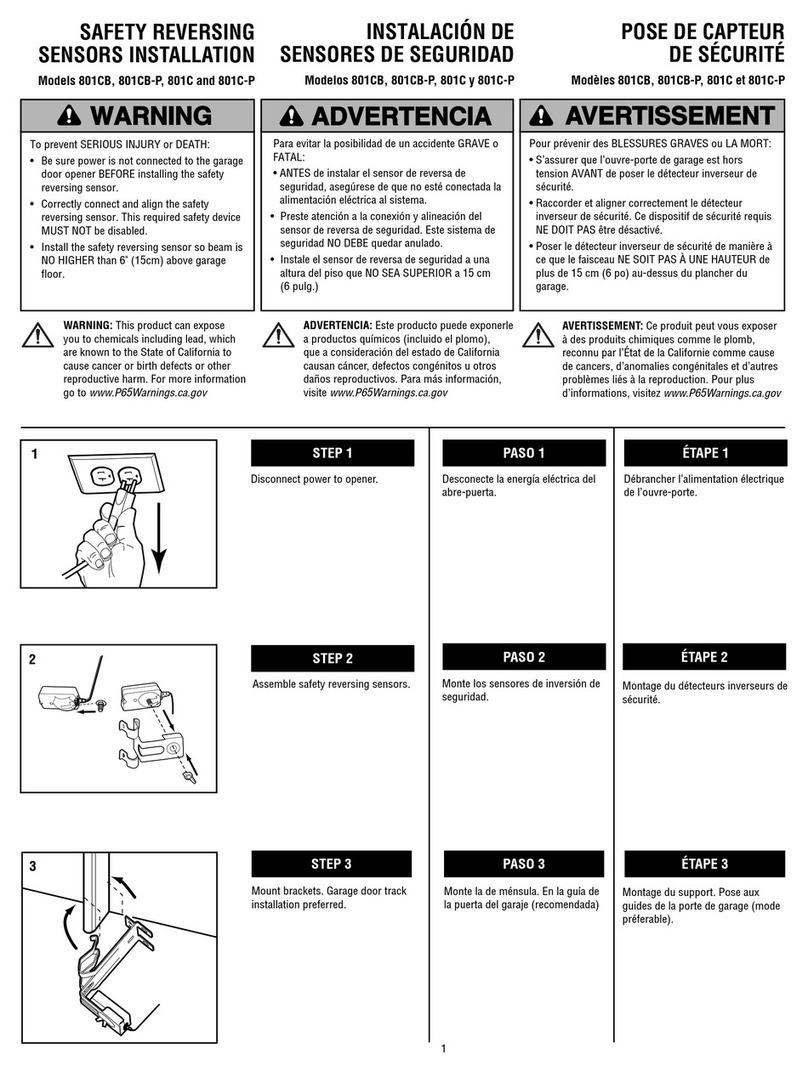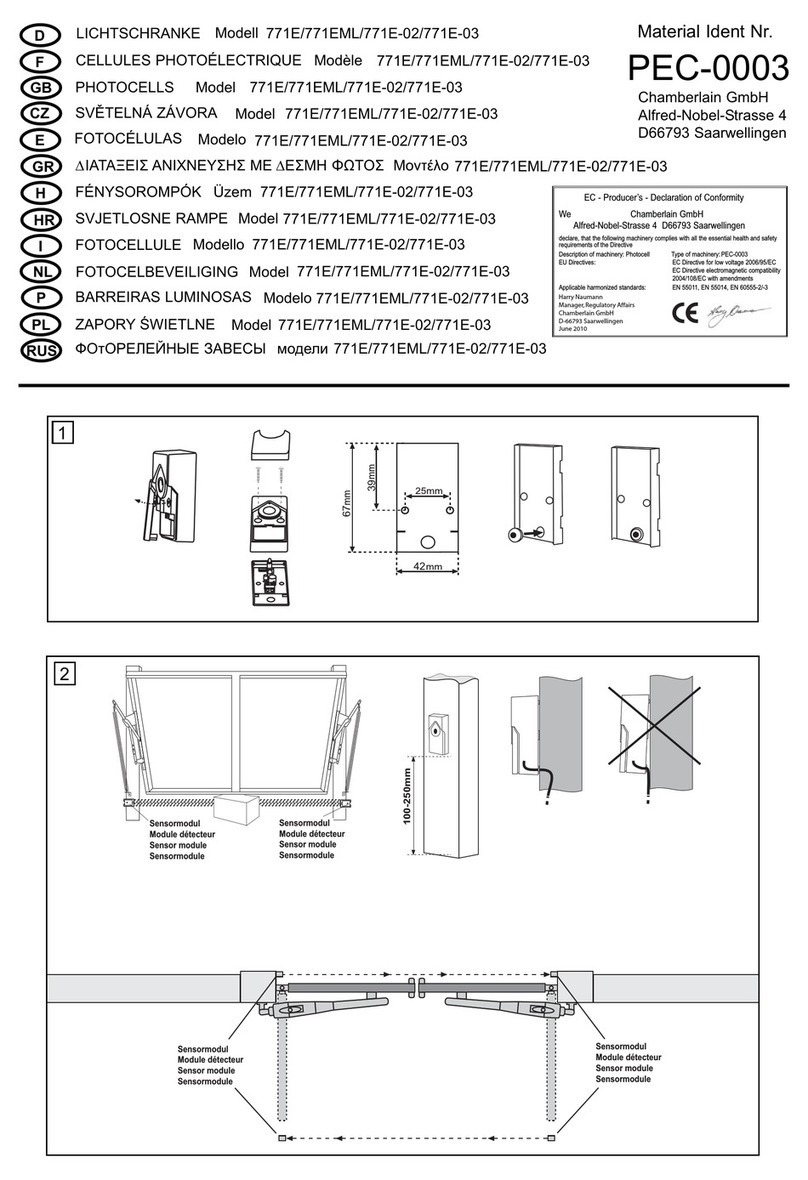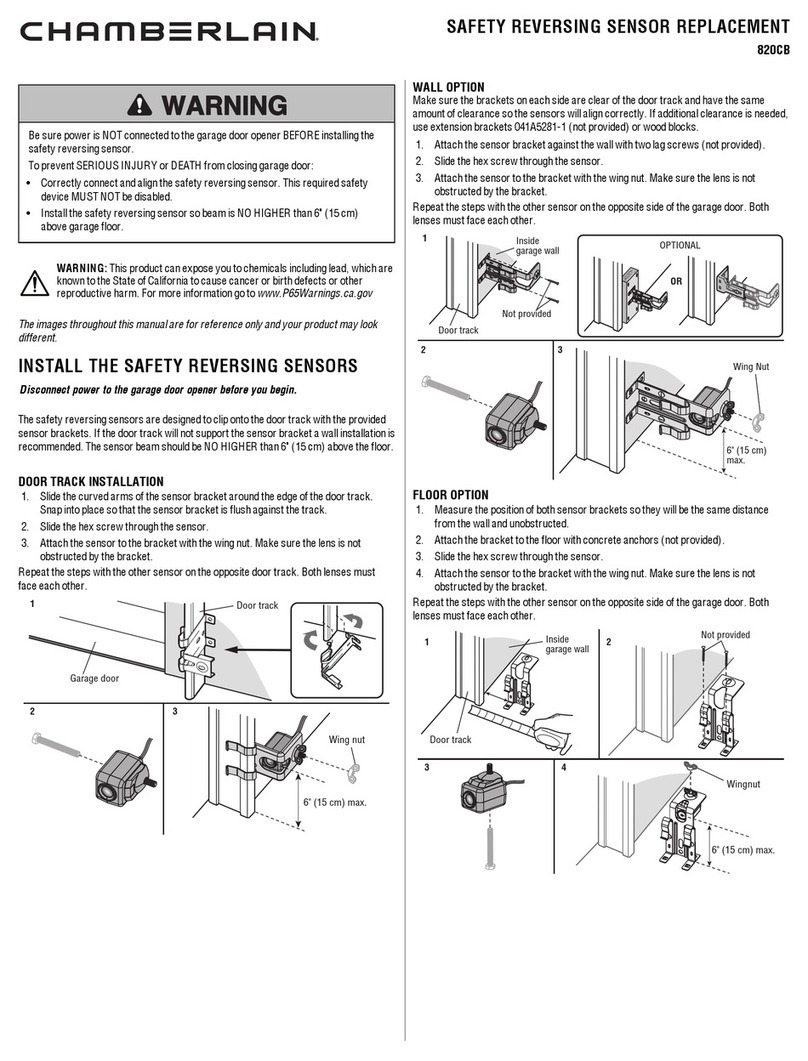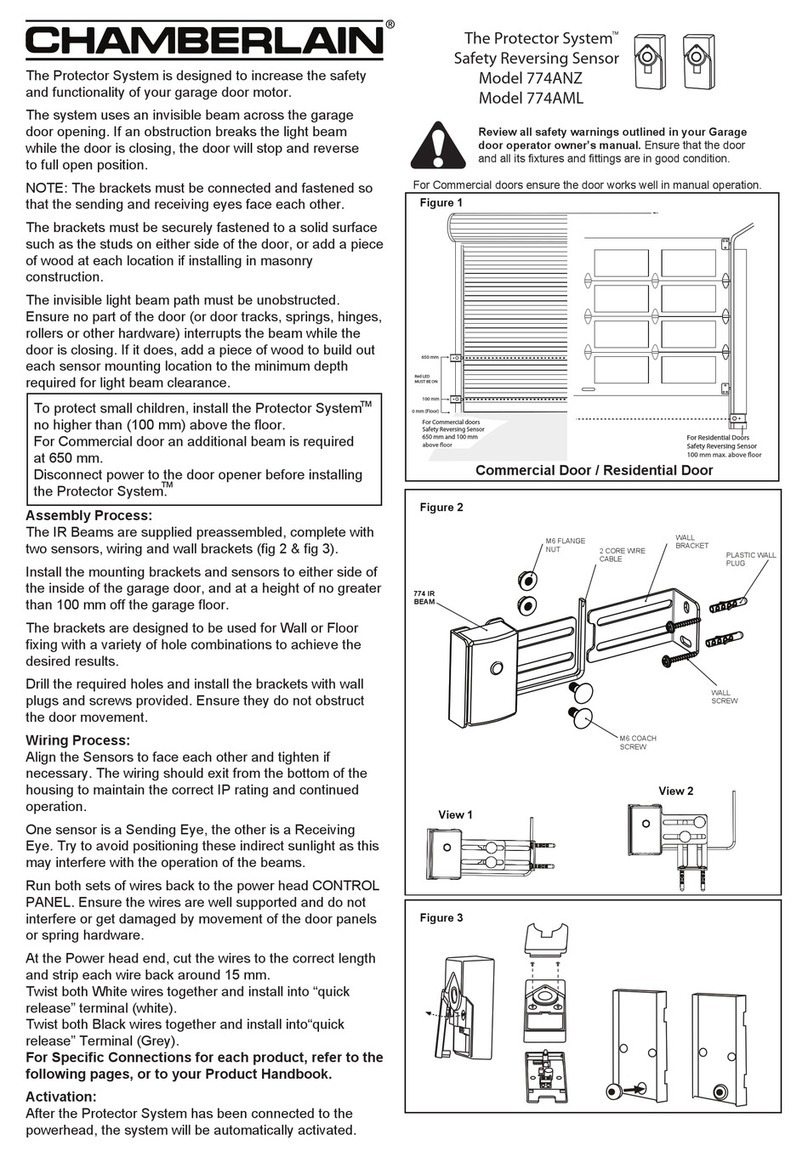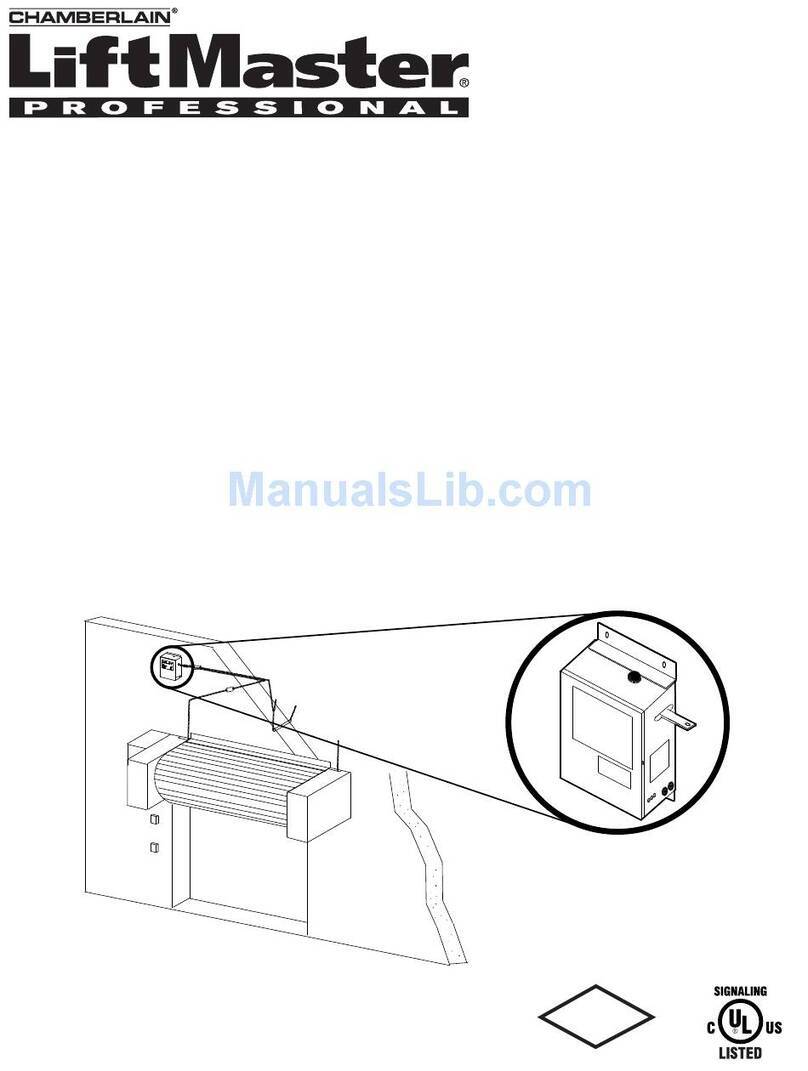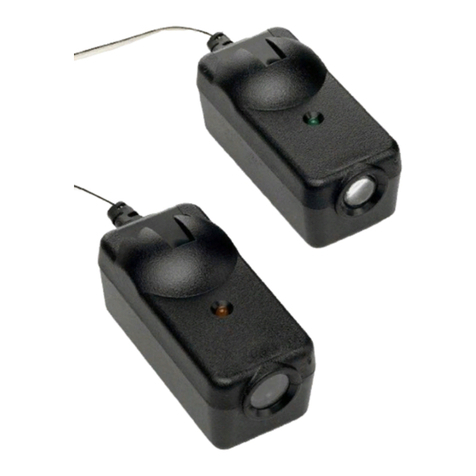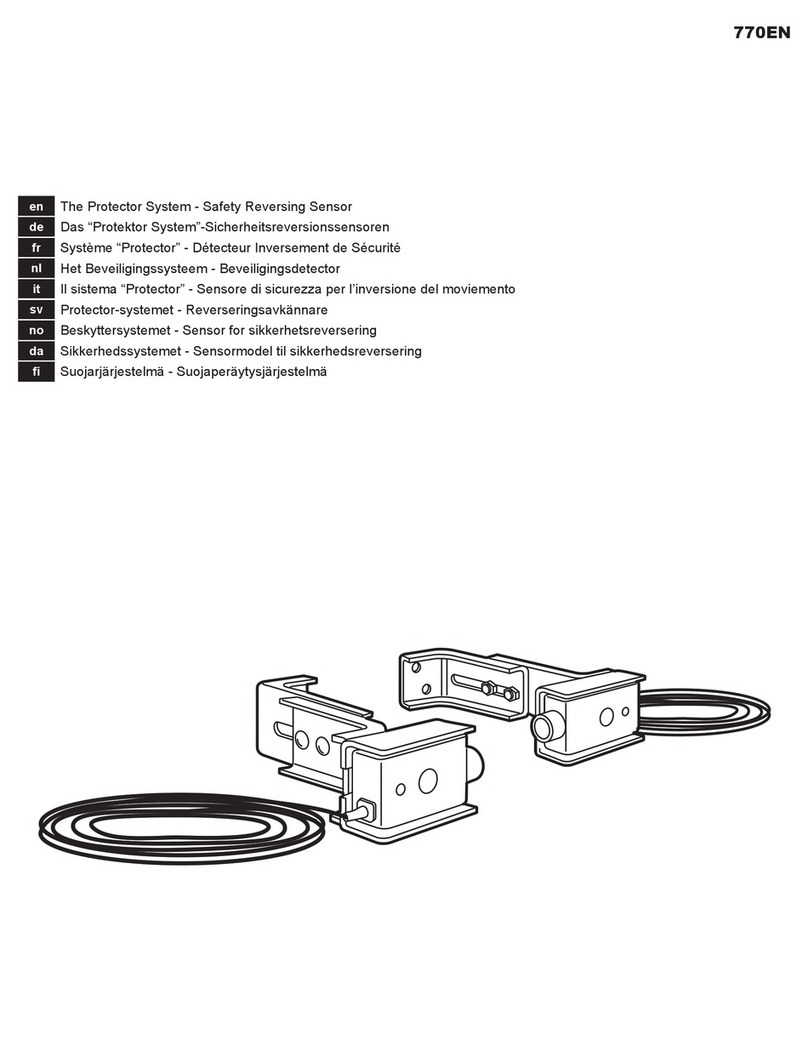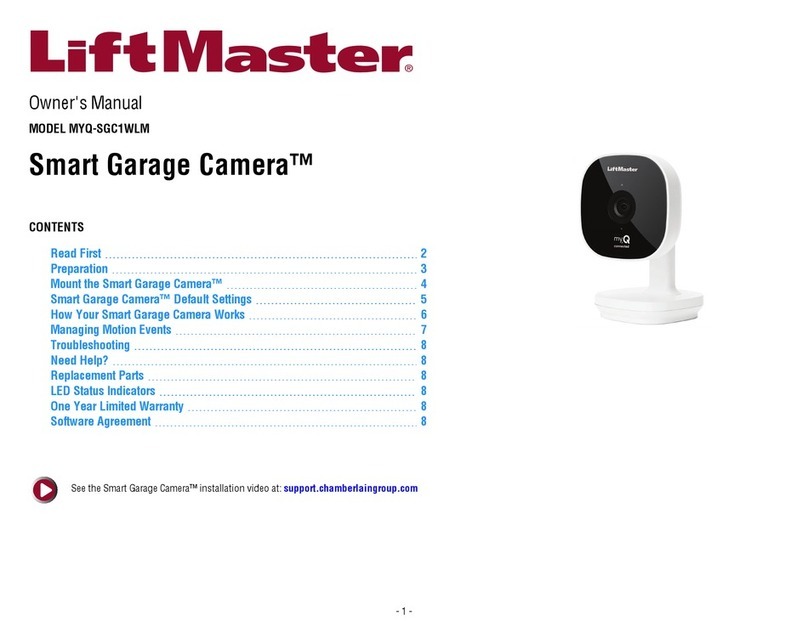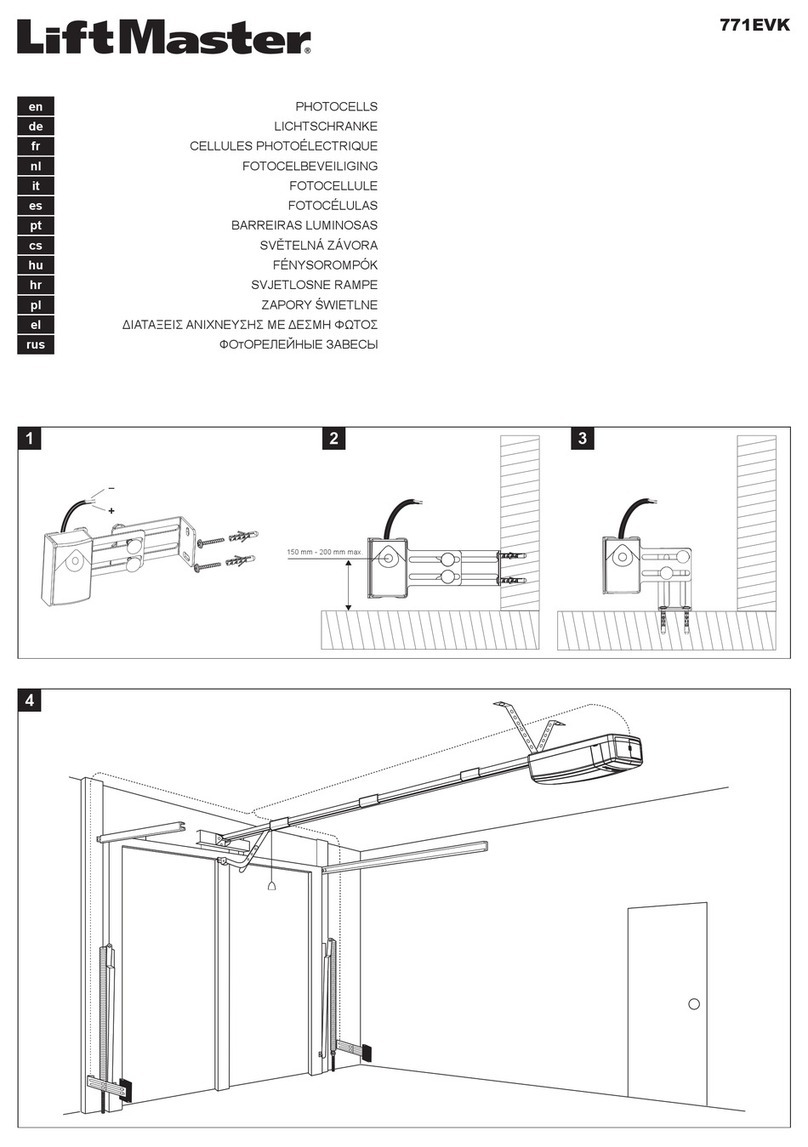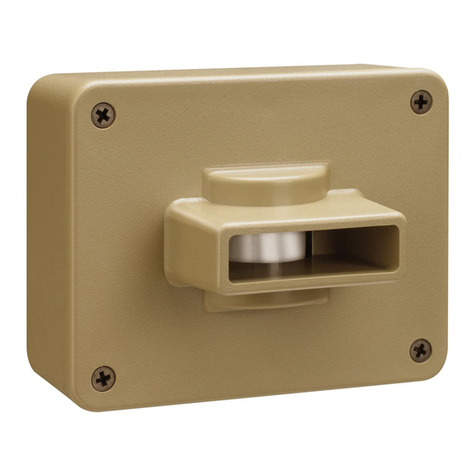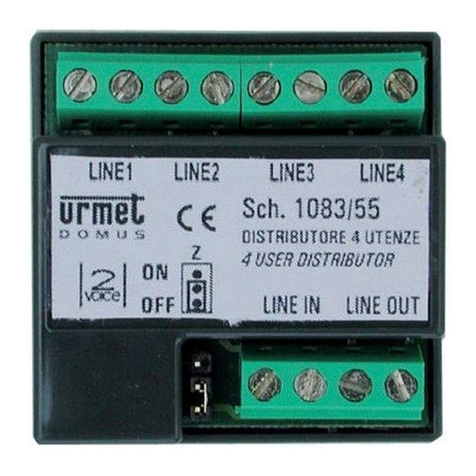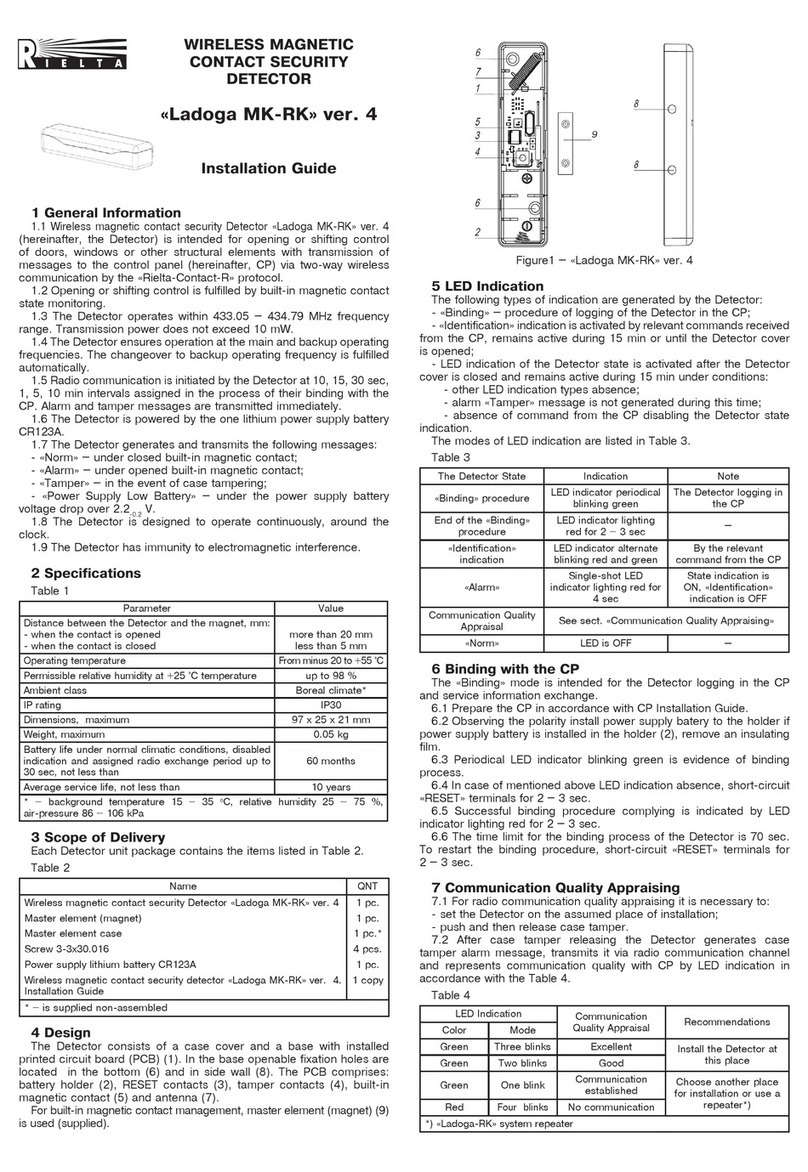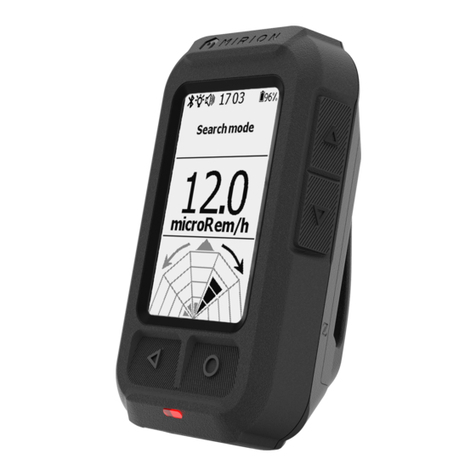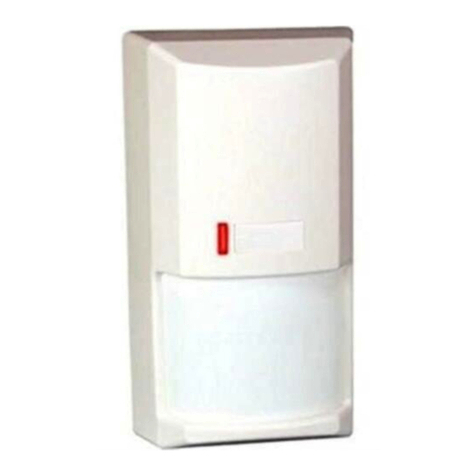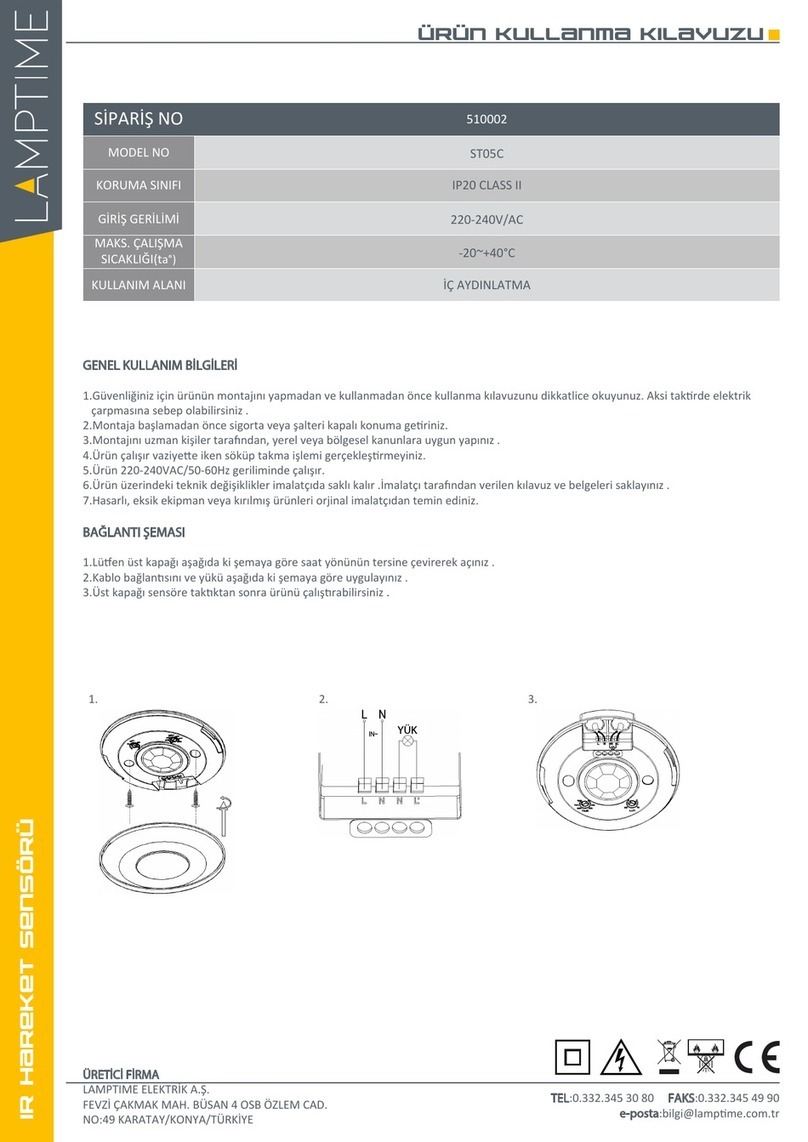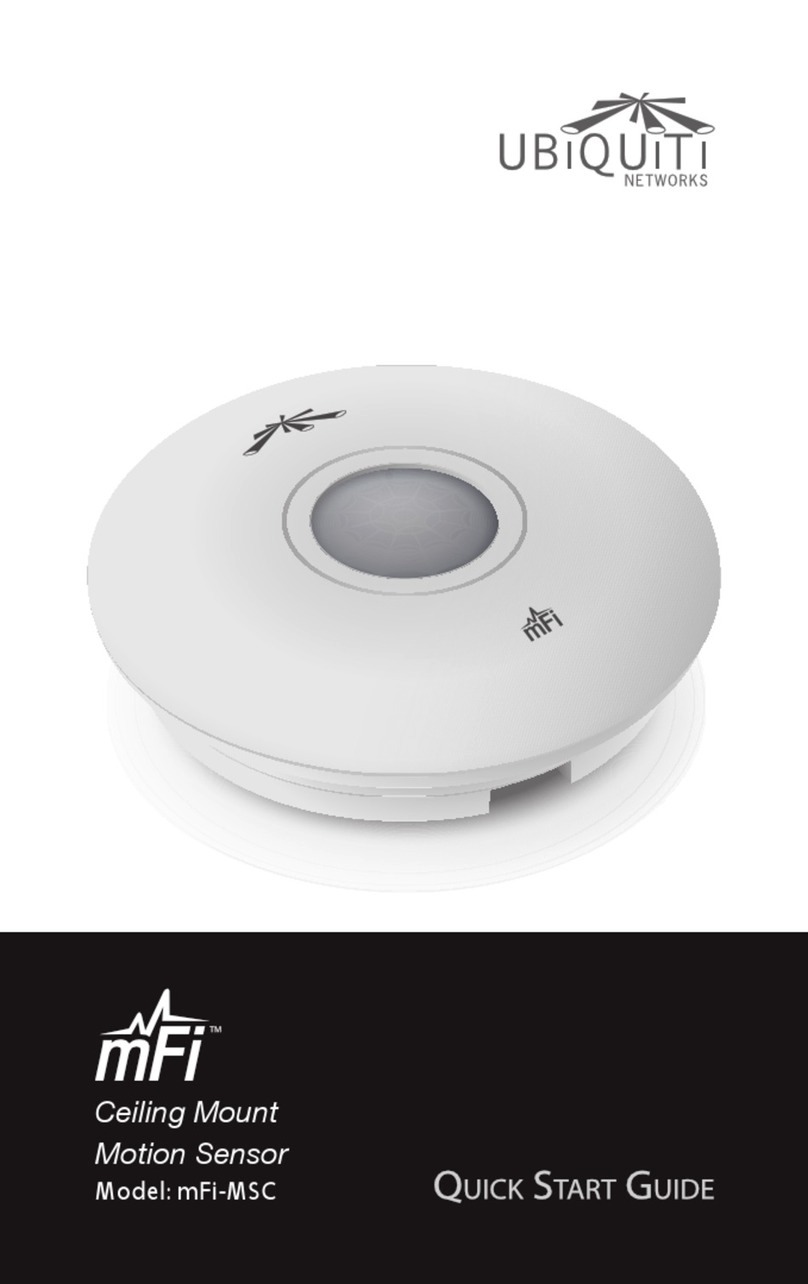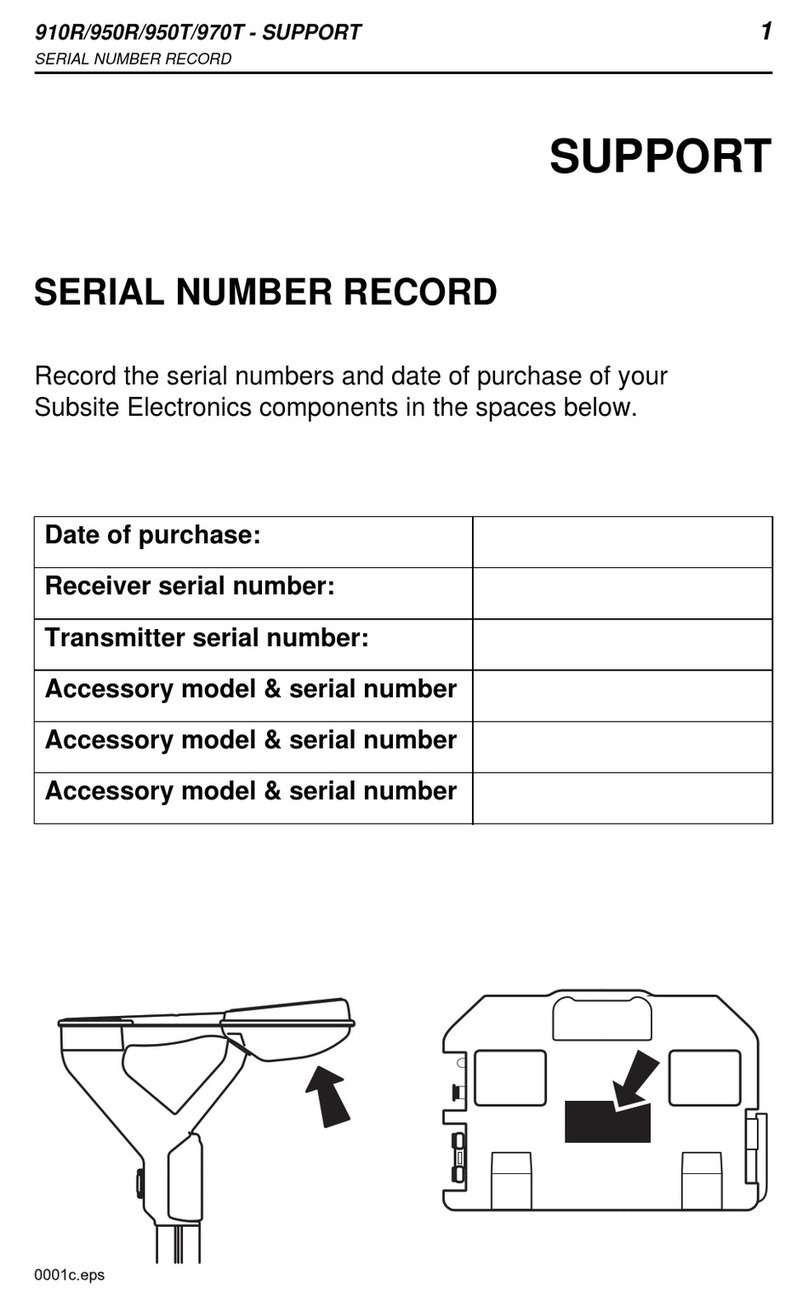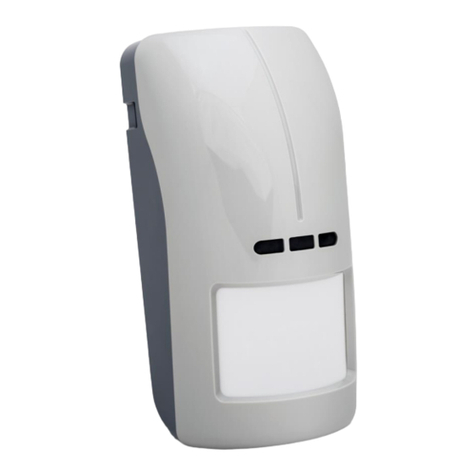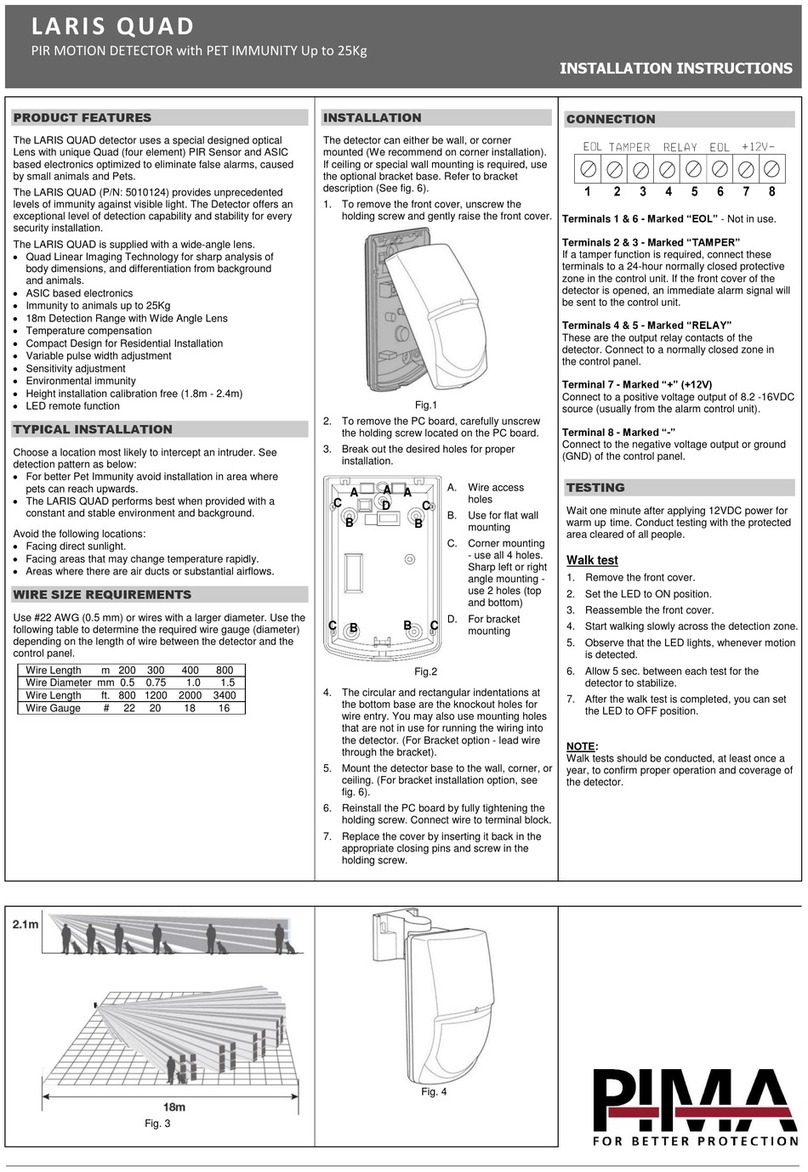
©2011 The Chamberlain Group, Inc.
01-36190D All Rights Reserved
WIRING
1Plug the loop detector into the desired slot (Shadow, Interrupt, or Exit) on the
expansion board of the operator. NOTE: If only LOOPDETLM loop detectors are
used, manual frequency adjustments are not required and crosstalk is
eliminated. If a LOOPDETLM is used in combination with other alternate loop
detectors, then manual frequency adjustments may be required.
Insert the twisted wires from the loop into the corresponding terminal (Shadow,
Interrupt, or Exit) on the expansion board of the operator. Polarity does not
matter.
2
1Turn the dial to TEST. The loop detector will send a signal to the main board
simulating a vehicle over the loop.
Exit: If the gate is closed, it will open or if the gate is already open it will
remain open.
Shadow: Active ONLY when the gate is in the open position. If the gate is
open, it will remain open.
Interrupt: If the gate is closing, it will open.
Turn the dial back to the desired sensitivity setting.
BLUE LED WHITE LED EXPLANATION
1 Blink (every 10
seconds)
OFF Normal Operation
2 Blinks Rapid Blinks (active fault)
or OFF
Open Loop (see TROUBLESHOOTING)
3 Blinks Rapid Blinks (active fault)
or OFF
Shorted Loop (see TROUBLESHOOTING)
4 Blinks Rapid Blinks (active fault) Failed Authentication (see
TROUBLESHOOTING)
OFF 2 Blinks Successful Reset
OFF Slow Blinks Loop detector is in TEST or PROG mode
Solid Solid Active Loop
Blue LED
(located under dial) Dial
Boost Switch
Frequency Button
OPERATION
FREQUENCY
To change the frequency of the loop detector:
Turn the dial to PROG.
Press the frequency button to cycle through the 4 frequency settings.
NOTE: The blue LED will blink to indicate the current frequency setting.
To reset frequency to factory default, hold the frequency button for 5 seconds.
1
2
BOOST SWITCH
The boost switch will increase the sensitivity of the loop detector to detect high profile
vehicles (such as semi trucks).
WARRANTY
DIAL SETTINGS EXPLANATION
TEST Mode Used to test the loop detector
1-8 Determines the sensitivity setting for the loop detector:
1 is the lowest sensitivity (large vehicle) setting and 8 is the
highest sensitivity (small vehicle). Default setting is 4.
PROG Mode Used to change the frequency of the loop detector
TROUBLESHOOTING
ONE YEAR LIMITED WARRANTY
The Chamberlain Group, Inc. warrants to the first retail purchaser of this product that
is free from defect in materials and/or workmanship for a period of 1 year from the
date of purchase.
www.liftmaster.com
2
White LEDs
(located under dial)
Shadow Slot Interrupt Slot Exit Slot
Exit Loop
Interrupt Loop
Shadow Loop EXPANSION BOARD
THIS DEVICE COMPLIES WITH PART 15 OF THE FCC RULES. OPERATION IS SUBJECT TO THE FOLLOWING TWO
CONDITIONS: (1) THIS DEVICE MAY NOT CAUSE HARMFUL INTERFERENCE, AND (2) THIS DEVICE MUST ACCEPT ANY
INTERFERENCE RECEIVED, INCLUDING INTERFERENCE THAT MAY CAUSE UNDESIRED OPERATION.
This Class B digital apparatus complies with Canadian ICES-003.
Cet appareil numérique de la classe B est conforme à la norme NMB-003 du Canada.
Open or Shorted Loop (2 and 3 Blink errors):
Test the loop detector (refer to TEST THE LOOP DETECTOR section). If the loop
detector passes the test, this indicates the loop detector is working properly and there
is an issue with the loop wiring.
Failed Authentication (4 Blink error):
• Check the wire connecting the expansion board to the main board or
• Unplug the loop detector then plug it back into the same slot (clears all faults and
keeps the current frequency settings, authenticates) or
• Unplug the loop detector. Then unplug the J15 plug on the operator’s control
board and plug it back in after 2-3 seconds. This allows the loop detector to be
plugged into a different slot (clears all faults and keeps the current frequency
settings, authenticates).
To clear a fault:
• Press the reset button on the operator (clears all faults) or
• Unplug the loop detector then plug it back into the same slot.
The loop is making false detections:
• There is crosstalk between the LOOPDETLM and the alternate loop detector or
• Change the frequency or lower the sensitivity setting of the loop detector.
The loop will not activate when a vehicle passes over it:
• Turn the boost switch ON or increase the sensitivity of the loop detector or
• If the blue and white LEDs are solid, indicating an Active Loop, and the operator
does not activate, there could be a fault. Once the loop is inactive, check the LED
codes for a fault (refer to LED table above).
TEST THE LOOP DETECTOR

